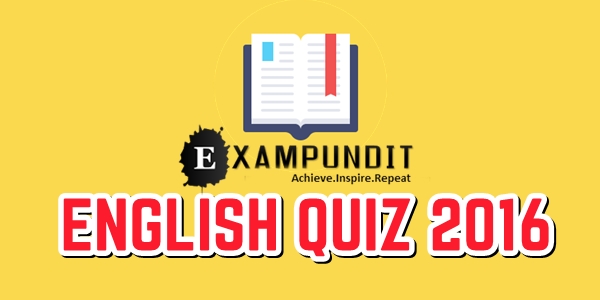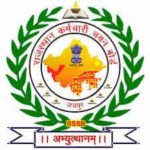Hello and welcome to ExamPundit. Here is a set of English Quiz for upcoming Bank Clerk and Assistant Grade Exams in 2016.
DIRECTIONS (Qs.1-10) : Read the following passage carefully
and answer the questions given below it. Certain words are printed in bold to
help you to locate them while answering some of the questions.
and answer the questions given below it. Certain words are printed in bold to
help you to locate them while answering some of the questions.
It is difficult to imagine the extraordinary number of controls on
Indian industry before 1991. Entrepreneurs needed permission to invest and
could be penalised for exceeding production capacity. Even with the given
investment capacity they had, entering certain areas was prohibited as these
were reserved for the public sector. If they had to import anything, they
required licences. To get these licences was tough. They had to persuade a
bureaucrat that the item was required but even so permission was unavailable if
somebody was already producing it in India. The impact of the reforms was not
instantaneously and permanently wonderful. In India’s case it began to show
after about a year-and-a-half. After 1993 there came three years of rapid
industrial growth of about 8% or so. But, in the second half of the 90s, there
was a tapering of industrial growth and investment. After 1997 and the East
Asian crisis there was global slowdown, which had an impact on the Indian
industry. But, in the last few years there has been a tremendous upturn. With
the rise of investment industrial
growth has reached double digits or close.
Indian industry before 1991. Entrepreneurs needed permission to invest and
could be penalised for exceeding production capacity. Even with the given
investment capacity they had, entering certain areas was prohibited as these
were reserved for the public sector. If they had to import anything, they
required licences. To get these licences was tough. They had to persuade a
bureaucrat that the item was required but even so permission was unavailable if
somebody was already producing it in India. The impact of the reforms was not
instantaneously and permanently wonderful. In India’s case it began to show
after about a year-and-a-half. After 1993 there came three years of rapid
industrial growth of about 8% or so. But, in the second half of the 90s, there
was a tapering of industrial growth and investment. After 1997 and the East
Asian crisis there was global slowdown, which had an impact on the Indian
industry. But, in the last few years there has been a tremendous upturn. With
the rise of investment industrial
growth has reached double digits or close.
However even during the period
when industrial growth was not that rapid, there is a lot of evidence that
positive results of the reforms were seen. There were companies that didn’t
look at all internally but instead performed remarkably in the highly
competitive global market. For instance, the software sector’s performance was
outstanding in an almost totally global market. Reliance built a world-class
refinery. Tatas developed an indigenously designed car. The success of the
software sector has created much higher expectations from and much higher
confidence in what Indian industry can do. On the government’s side it’s a
vindication that liberalisation of both domestic and external policies,
including the increased inflow of Foreign Direct Investment, has created an
environment in which industry can do well, has done well and is preparing to do
even better. What they need is not sops, but good quality infrastructure. For
the 11th Plan an industrial growth rate of around 12% is projected. It will have methods of developing infrastructure, which
will close the deficit. This can be done through increased investment in public
sector for those infrastructure areas, which cannot attract private investment, and through efforts to improve private
participation in different ways of public-private participation.
when industrial growth was not that rapid, there is a lot of evidence that
positive results of the reforms were seen. There were companies that didn’t
look at all internally but instead performed remarkably in the highly
competitive global market. For instance, the software sector’s performance was
outstanding in an almost totally global market. Reliance built a world-class
refinery. Tatas developed an indigenously designed car. The success of the
software sector has created much higher expectations from and much higher
confidence in what Indian industry can do. On the government’s side it’s a
vindication that liberalisation of both domestic and external policies,
including the increased inflow of Foreign Direct Investment, has created an
environment in which industry can do well, has done well and is preparing to do
even better. What they need is not sops, but good quality infrastructure. For
the 11th Plan an industrial growth rate of around 12% is projected. It will have methods of developing infrastructure, which
will close the deficit. This can be done through increased investment in public
sector for those infrastructure areas, which cannot attract private investment, and through efforts to improve private
participation in different ways of public-private participation.
In the early stages of reforms,
the liberalisation of trade policies and a shift to a market-determined
exchange rate had the effect of removing constraints on agriculture in terms of
depressed prices. The removal of protection on industry helped to produce a
more level playing field, because the earlier system was extremely unfair to
agriculture. The lesson to be learnt from the reforms process is to persevere in reforming the strategic
parts of the economy, which will lead to even higher growth rate. India has to
do better than its current average growth rate of 8% and ensure that benefits
from this higher growth go beyond industry and urban areas and extend to
agriculture.
the liberalisation of trade policies and a shift to a market-determined
exchange rate had the effect of removing constraints on agriculture in terms of
depressed prices. The removal of protection on industry helped to produce a
more level playing field, because the earlier system was extremely unfair to
agriculture. The lesson to be learnt from the reforms process is to persevere in reforming the strategic
parts of the economy, which will lead to even higher growth rate. India has to
do better than its current average growth rate of 8% and ensure that benefits
from this higher growth go beyond industry and urban areas and extend to
agriculture.
1.
Which of the following factors was responsible for the fall in India’s growth
rate in the late 1990s?
Which of the following factors was responsible for the fall in India’s growth
rate in the late 1990s?
(a) The implementation of economic reforms was too rapid.
(b) It was expected after achieving a high growth rate of 10%.
(c) There was a slowdown in the global economy.
(d) There were sanctions against East Asian countries by WTO.
(e) The software sector grew but the other sectors were neglected.
2.
Which of the following can be said about the reforms of 1991?
Which of the following can be said about the reforms of 1991?
(a) They benefited Indian industry immediately.
(b) All Indian companies began to focus on indigenous development
instead of looking for opportunities abroad.
instead of looking for opportunities abroad.
(c) They were targeted only at the software sector.
(d) India was among the worst affected countries by the East
Asian economic crisis because it had opened up its economy.
Asian economic crisis because it had opened up its economy.
(e) They encouraged foreign direct investment in India
3.
What is the author’s opinion about the government’s decision to liberalise the
economy in 1991 ?
What is the author’s opinion about the government’s decision to liberalise the
economy in 1991 ?
(a) It was beneficial because it created confidence in the Indian
economy.
economy.
(b) The timing was wrong since the economy experienced slowdown
in growth rate.
in growth rate.
(c) It led to a focus on software and other sectors were neglected.
(d) Foreign companies took advantage of the new policies and
exploited certain sectors.
exploited certain sectors.
(e) None of these
4.
What does the author recommend to ensure that the industrial sector continues
to perform better?
What does the author recommend to ensure that the industrial sector continues
to perform better?
(a) Subsidies should be provided in infrastructure development.
(b) Government should keep control of and monitor all infrastructure
projects.
projects.
(c) Wipe out any infrastructure deficit by transferring responsbility
of these projects to the private sector
of these projects to the private sector
(d) Ensure a combination of public and private sector involvement
in developing infrastructure.
in developing infrastructure.
(e) None of these
5.
How did the economic reforms affect the agriculture sector?
How did the economic reforms affect the agriculture sector?
(a) A system of market determined exchange rate was introduced.
(b) Constraints in agriculture increased
(c) Prices were depressed because there was a removal of protection
on the sector.
on the sector.
(d) Agriculture growth rate doubled.
(e) None of these
DIRECTIONS
(Qs. 6-8) : Choose the word which is most nearly the SAME in meaning as the
word given in bold as
used in the passage.
(Qs. 6-8) : Choose the word which is most nearly the SAME in meaning as the
word given in bold as
used in the passage.
6.
extraordinary
extraordinary
(a) unusual (b) wonderful
(c) rare (d) beautiful
(e) strange
7.
rise
rise
(a) stand (b) increase
(c) slope (d) upward
(e) progress
8.
projected
projected
(a) discussed (b) needed
(c) estimated (d) achieved
(e) thrown
DIRECTIONS
(Qs.9-10): Choose the word which is most OPPOSITE in meaning of the word given
in bold as used
in the passage.
(Qs.9-10): Choose the word which is most OPPOSITE in meaning of the word given
in bold as used
in the passage.
9.
persevere
persevere
(a) lose (b) hide
(c) chase (d) disturb
(e) stop
10.
attract
attract
(a) ugly (b) offend
(c) push (d) sick
(e) reject
Winners:
- Ami Sourav – 9/10
- ks – 9/10
- Chitrarth – 8/10
Regards
Team ExamPundit
Sponsored
(adsbygoogle = window.adsbygoogle || []).push({});
This post was last modified on November 27, 2017 8:57 am





